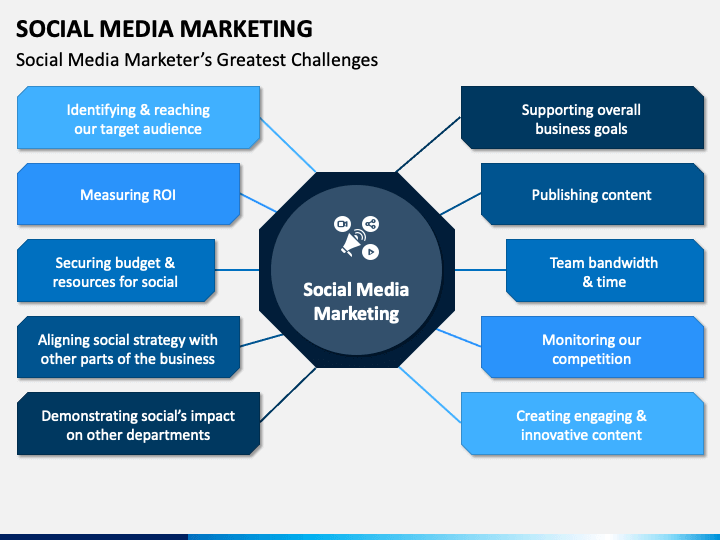Showcasing your work to clients is a crucial part of landing new business and building strong relationships with existing ones. One way to do this is with a social media marketing strategy PPT.
This template includes slides for channels, content formats, and content categories. It also has a team slide and charts and graphs to show quantitative data.
1. Introduction
Showcasing your work in a professional manner is a great way to impress new clients and build stronger relationships with existing ones. Social media marketing is a complex and time-consuming process, so it’s important to present your work in a clear way to show your clients that you can deliver the results they need.
A social media marketing strategy isn’t necessarily measurable in dollar terms, since the return on investment depends on human interactions and conversations. However, it is possible to track metrics such as traffic and conversions to see if your campaigns are working. Adding phases to your presentation is a good way to make it easier for your client to understand the project and its progress.
Using this template, you can easily present the social media marketing plan for your client. It includes slides for different social media channels and a chart and graph slide to showcase quantitative data. This template is also customizable to fit your needs. You can add your company name, team members, a tagline or a brief mission statement.
Social media marketing is a process that requires careful planning and consistent execution. It is also important to measure the results of your campaigns to identify opportunities for improvement. Use this template to create a social media marketing strategy for your client and demonstrate your expertise in this field.
2. Social Networks
Social media is a huge part of any marketing mix. It helps boost engagement and reach, creating unforgettable brand experiences for your customers. And with social algorithms constantly changing, it’s important to keep an eye on the big picture and make sure your content is achieving your goals.
To help you do that, we’ve collected a few super-affordable templates to document your work throughout the year. One of them is from CreativeMarket, featuring a calendar of tasks that helps you visualize your recurring processes for research, analysis, and content creation. The other is from DesignsDuke, which costs as much as a t-shirt and can be edited with PowerPoint or Adobe InDesign.
Another helpful tool is a social media strategy template that provides a framework to document your plan for the year. It allows you to create a timeline of your key activities and includes sections for research, planning, analysis, content creation, and review. It also provides a place to include your top-performing and underperforming campaigns and highlights opportunities for improvement.
It’s also a good idea to add a slide that outlines your social media objectives and metrics. This will help your team stay focused on what’s most important and keep your audience engaged. It’s also an opportunity to highlight the benefits of your approach and show that you have thought about how it will impact your business.
3. Competitor Analysis
A competitive analysis is a crucial step in determining your social media marketing strategy. A competitive analysis can reveal what your competitors are doing well, which areas need improvement and help you set realistic goals for your business. This slide allows you to select up to five competitors and rank how their social media efforts compare with yours.
Your competitors can influence everything from your marketing messaging and post reach to your customer service and social commerce strategies. The best way to stay ahead of the competition is by understanding what metrics matter and which networks drive the most value for your business. This slide lets you showcase the most important metrics in your industry, including post reach, engagement rates and clicks.
When doing a competitor analysis, it is vital to include both direct and indirect competitors. Your direct competitors are businesses that sell the same product or services as you do. For example, if your company sells coffee, your direct competitors would be brands like La Colombe, Peet’s, and Caribou. Indirect competitors are businesses that may not sell your products but serve a similar audience or fill a niche in the market.
A competitor analysis should be done on a regular basis to stay updated on your competitors. A competitor analysis can also uncover new opportunities for your business. For example, a new competitor may be using a different type of social media channel that you aren’t currently using. This could be a great opportunity to gain a significant advantage over your competitors.
4. Social Media Marketing Strategy
A social media marketing strategy outlines the actions a company will take to meet its goals for online social platforms. It typically includes goals such as increasing brand awareness, selling products, gaining repeat customers and accomplishing other objectives. It also details what kind of content to post and which platforms to use to reach audiences. Most companies rely on a social media manager or marketing director to develop a strategy for team members to carry out.
A common part of a social media marketing strategy is a competitor analysis. This involves reviewing competitors’ channels, accounts and followings to see what they are doing. You can also look for competitors that share your audience to understand what kinds of posts and interactions are effective. This kind of competitive analysis can help you improve your own efforts to meet your goals.
Another key element of a social media marketing strategy is creating a content calendar. This document shows which content items will be published on each platform at a given time, as well as how often those posts will be posted. Using a tool such as Planable, you can visualize your content by week or month so that you can create a social media posting schedule that meets the needs of your audiences. This will keep your company on track to meet its growth marketing goals.

